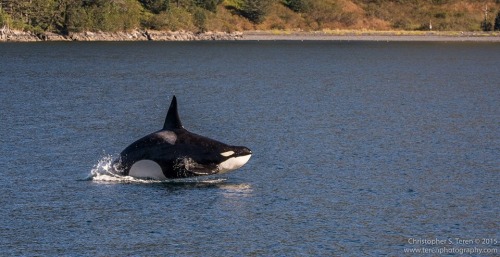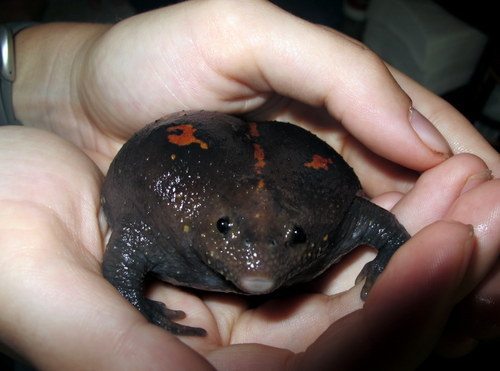SeaWorld Can Extend Tilikum's Legacy Beyond The Show Pool
SeaWorld Can Extend Tilikum's Legacy Beyond the Show Pool
Monday, March 14, 2016
http://voiceoftheorcas.blogspot.com/2016/03/seaworld-can-extend-tilikums-legacy.html
To Whom It May Concern:
Myself, and the other members of VOTO, Samantha Berg, John Jett, and Carol Ray, have been informed that Tilikum, a SeaWorld killer whale in Orlando, is near death. We are saddened by this announcement, although it is not unexpected.
Tilikum has developed an antibiotic resistant bacterial infection of the lungs, with pneumonia being the leading reported cause of captive killer whale mortality. Efforts to treat Tilikum have failed due to decades of antibiotic and antifungal therapy, medications that three-of-us at VOTO have fed him, and medications he was on in 2010 when he killed Dawn Brancheau, as reported by
APHIS, here
Tilikum has been getting fed antibiotics consistently for at least two decades, primarily because of his badly damaged teeth, including open bore holes that must be flushed with antiseptic solution 2-3 times daily. These bore holes can lead to fish particles, roe, and other debris getting into the jaw and eventually into his blood stream, causing chronic low grade infection(s), and able to seed various organs, including the lungs. The end result is that, now, Tilikum is filled with bacteria that are resistant to powerful and broad spectrum medications that SeaWorld is dosing him with.
Tilikum is, at this time, likely suffering from pulmonary edema, or excess fluid in his lungs. When the surface area of his alveoli diminishes sufficiently, he will suffocate in a stretcher, at SeaWorld. In a last ditch effort to obtain air to oxygenate his tissues, he will likely thrash in the stretcher, and go through a period of “death throes,” prior to finally passing. This is a particularly dangerous time for the animal care and training staff on hand.
A crane is reportedly standing by, possibly to recover his body if he should pass. This information is unconfirmed, but it does correspond with SeaWorld’s recent announcements seen in this video:
Many citizens, including some in the scientific community, are hopeful that SeaWorld will dedicate Tilikum’s cadaver to science. This gesture would advance our understanding of the impact of captivity on marine mammals such as Tilikum.
Histological samples of dorsal fin collagen would help us understand collagen fibrillogenesis in killer whales, and why dorsal fins collapse in captivity. Kidney tissue samples could help us understand the effects of chronic dehydration on orcas, like Tilikum, who require gelatin as a dietary supplement. Cardiac tissue could be examined for evidence of physical deconditioning. Eye tissue could be used to understand the effects of looking upward toward trainers, a behavior that is probably contributory to early cataract formation in show animals that must look for hand signals from trainers, on stage. Blood tissue can be used to test for elevated titers of viruses such as West Nile, St Louis encephalitis, and other mosquito transmitted “bugs” associated with zoos, but not seen in wild animals. Immunoglobulin levels could provide information on captive orca immunity. Detailed bone and joint examinations could be examined for evidence of various arthritides. DNA testing could help identify Tilikum’s natal pod, and so on.
Take the NFL as an example
Samples of brain tissue were critical in understanding the newly described condition (seen in NFL players) known as
Chronic Traumatic Encephalopaty (CTE)
and as depicted in the feature film “Concussion,” with Will Smith. The NFL was initially resistant to outside scientists performing these studies, but is now helping to fund them. SeaWorld can mimic the NFL, and CEO Joel Manby can get credit for the change, something that might give him some job security.
Killer whales in captivity are also known to slam their heads on solid objects such as gates and concrete walls, especially adult male killer whales, with Kanduke being a famous example. Tilikum’s brain tissue, or perhaps a new MRI, as depicted in Blackfish, could push our understanding of the orca brain forward, a brain four times larger than our own.
SeaWorld has an opportunity to extend Tilikum’s legacy beyond the performance pool and to substantiate it’s claims of performing relevant science. We are hopeful they will take up this idea for the benefit of science, the public, policy makers, whale lovers, and for future killer whales.
Thank you, Tilikum, for your sacrifices. Your legacy will live on through us and the millions of people your story has touched.
Jeffrey Ventre MD
Blackfish cast member
More Posts from Llamaslikesciencetoo and Others

TheStare by © wildernessprints.com
Wild adult lynx in Banff National Park

Mildred Dresselhaus, a professor emerita at the Massachusetts Institute of Technology whose research into the fundamental properties of carbon helped transform it into the superstar of modern materials science and the nanotechnology industry, died on Monday in Cambridge, Mass. She was 86.
Her death, at Mount Auburn Hospital, was confirmed by her granddaughter Leora Cooper. No cause was given.
Nicknamed the Queen of Carbon in scientific circles, Dr. Dresselhaus was renowned for her efforts to promote the cause of women in science. She was the first woman to secure a full professorship at M.I.T., in 1968, and she worked vigorously to ensure that she would not be the last.
In 1971, she and a colleague organized the first Women’s Forum at M.I.T. to explore the roles of women in science. Two years later she won a Carnegie Foundation grant to further that cause.
“I met Millie on my interview for a faculty job in 1984,” said Lorna Gibson, now a professor of materials science and engineering. “M.I.T. was quite intimidating then for a new female, but Millie made it all seem possible, even effortless. I knew it wouldn’t be, but she was such an approachable intellectual powerhouse, she made it seem that way.”
[…]
Dr. Dresselhaus used resonant magnetic fields and lasers to map out the electronic energy structure of carbon. She investigated the traits that emerge when carbon is interwoven with other materials: Stitch in some alkali metals, for example, and carbon can become a superconductor, in which an electric current meets virtually no resistance.
Dr. Dresselhaus was a pioneer in research on fullerenes, also called buckyballs: soccer-ball-shaped cages of carbon atoms that can be used as drug delivery devices, lubricants, filters and catalysts.
She conceived the idea of rolling a single-layer sheet of carbon atoms into a hollow tube, a notion eventually realized as the nanotube — a versatile structure with the strength of steel but just one ten-thousandth the width of a human hair.
She worked on carbon ribbons, semiconductors, nonplanar monolayers of molybdenum sulfide, and the scattering and vibrational effects of tiny particles introduced into ultrathin wires.
She published more than 1,700 scientific papers, co-wrote eight books and gathered a stack of accolades as fat as a nanotube is fine.
Dr. Dresselhaus was awarded the National Medal of Science, the Presidential Medal of Freedom (bestowed by President Barack Obama), the Kavli Prize in Nanoscience, the Enrico Fermi prize and dozens of honorary doctorates. She also served as president of the American Physical Society and the American Association for the Advancement of Science and worked in the Department of Energy in the Clinton administration.
Continue Reading.

New Species of Shieldtail Snake Discovered in India
by Enrico de Lazaro
The Khaire’s black shieldtail (Melanophidium khairei) is described in a paper recently published in the journal Zootaxa by an international team of scientists led by Dr. David Gower of the Natural History Museum, London, UK. The newfound species occurs in southern Maharashtra, Goa, and northern Karnataka. It is the most northerly member of the genus…
(read more: Science News)
photographvia: David J. Gauer et al.




Women in Science: 50 Fearless Pioneers Who Changed the World by Rachel Ignotofsky
I have been following @rachelignotofsky on Tumblr for several years, and I’m truly happy to see her creative art of brilliant scientists now being in a book. These amusing illustrations together with educational information make a fantastic combination. I’m getting the book for my little sister but it’s definitely a great read for everyone. You can order the book HERE.

Breathtaking photo of a very special whale—AT6 Egagutak!
This photo was taken by Teren Photography yesterday (September 19th) in Aialik Bay. Egagutak is one of the 7 remaining AT1 transients. He, unlike the other AT1s, travels alone. To see this whale at all is a blessing. He’s truly one of a kind, and every sighting of him is a gift.


Climate change is not that complicated! (h/t)

friend of the day!
you’ve met handsome roundboy, now we introducing….
His Royal Flatness, mexican burrowing toad!

SO FLAT! i am swooning

a face of a king

perfect is he body

i trust him

I love him

beautiful smile of toad

he know you love him too!

in he come for a kiss!

thank you goodbye!!

Inked!
Squid (and their relatives of class Cephalopoda) have long been known to release ink when threatened by a predator. The ink acts as a smokescreen - obscuring the senses of the predator allowing the squid valuable seconds to escape their notice. Until now, this was thought to be the ink’s only function. However, scientists have discovered that at least one tiny species of squid - the Japanese pygmy squid (Idiosepius paradoxus) - utilises ink for an entirely different reason - they use it to hunt.
Keep reading


KELP FOREST REPLACE CORALS IN THE MEDITERRANEAN
A decrease from pH 8.1 to 7.9 observed in a CO2 vent system at 40 m depth leads to a dramatic shift in highly diverse and structurally complex habitats.
Rising levels of CO2 released by anthropogenic activities are driving unprecedented changes in the chemistry of the oceans. The mean ocean surface acidity has increased by 25–30% (equivalent to a drop of 0.1 pH units) since as the advent of the Industrial Revolution in the 1780s and is predicted to decline by a further 150–200% by the end of the century.
Ocean acidification is one of the greatest long-term challenges facing the survival of reefs and coral. Habitats widely distributed in the Mediterranean, such as coral colonies and maerl environments, characterized by the predominance of calcareous organisms, are relegated by Laminaria rodriguezii forests.
Dominant habitats at mesophotic depths (the deepest part of the photic zone where light penetration is low, typically from 30–40 m to over 150 m) are usually characterized by a large dominance of calcifying organisms, such as endangered coralligenous outcrops and rhodolith beds in the Mediterranean Sea, which display a notable carbonate production. Calcareous red algae are the main framework builders in those two habitats, providing structural complexity and favouring biodiversity
Reference: Linares et al. 2015. Persistent natural acidification drives major distribution shifts in marine benthic ecosystems. Proc. R. Soc. B
-
 blessingsandbooks liked this · 8 years ago
blessingsandbooks liked this · 8 years ago -
 princess6590 reblogged this · 8 years ago
princess6590 reblogged this · 8 years ago -
 larry-andthebottlemen liked this · 8 years ago
larry-andthebottlemen liked this · 8 years ago -
 mufasapwns liked this · 8 years ago
mufasapwns liked this · 8 years ago -
 litenkarin reblogged this · 8 years ago
litenkarin reblogged this · 8 years ago -
 linzielemie liked this · 8 years ago
linzielemie liked this · 8 years ago -
 midnightestsun liked this · 8 years ago
midnightestsun liked this · 8 years ago -
 rachaelldc liked this · 9 years ago
rachaelldc liked this · 9 years ago -
 icantremebermypassword liked this · 9 years ago
icantremebermypassword liked this · 9 years ago -
 icantremebermypassword reblogged this · 9 years ago
icantremebermypassword reblogged this · 9 years ago -
 llamaslikesciencetoo reblogged this · 9 years ago
llamaslikesciencetoo reblogged this · 9 years ago -
 kakyoin-noriorca reblogged this · 9 years ago
kakyoin-noriorca reblogged this · 9 years ago -
 localbicryptid reblogged this · 9 years ago
localbicryptid reblogged this · 9 years ago -
 pinkjellyfish746 liked this · 9 years ago
pinkjellyfish746 liked this · 9 years ago -
 llamafollower liked this · 9 years ago
llamafollower liked this · 9 years ago -
 wild-oceans reblogged this · 9 years ago
wild-oceans reblogged this · 9 years ago -
 wild-oceans liked this · 9 years ago
wild-oceans liked this · 9 years ago -
 orcaheart reblogged this · 9 years ago
orcaheart reblogged this · 9 years ago -
 orcaheart liked this · 9 years ago
orcaheart liked this · 9 years ago -
 usurpthecity reblogged this · 9 years ago
usurpthecity reblogged this · 9 years ago -
 planetlostinspace reblogged this · 9 years ago
planetlostinspace reblogged this · 9 years ago -
 planetlostinspace liked this · 9 years ago
planetlostinspace liked this · 9 years ago -
 wxyout-there reblogged this · 9 years ago
wxyout-there reblogged this · 9 years ago -
 wxyout-there liked this · 9 years ago
wxyout-there liked this · 9 years ago -
 usurpthecity liked this · 9 years ago
usurpthecity liked this · 9 years ago -
 wildorcaaviation reblogged this · 9 years ago
wildorcaaviation reblogged this · 9 years ago -
 wildorcaaviation liked this · 9 years ago
wildorcaaviation liked this · 9 years ago -
 pleasegivemeadifferentusername liked this · 9 years ago
pleasegivemeadifferentusername liked this · 9 years ago -
 pleasegivemeadifferentusername reblogged this · 9 years ago
pleasegivemeadifferentusername reblogged this · 9 years ago -
 floranna2 reblogged this · 9 years ago
floranna2 reblogged this · 9 years ago -
 mightyjamsauce liked this · 9 years ago
mightyjamsauce liked this · 9 years ago -
 vilesssserpent liked this · 9 years ago
vilesssserpent liked this · 9 years ago -
 just-chair-things reblogged this · 9 years ago
just-chair-things reblogged this · 9 years ago -
 theheroinesuniverse liked this · 9 years ago
theheroinesuniverse liked this · 9 years ago -
 reallypleasantflower liked this · 9 years ago
reallypleasantflower liked this · 9 years ago -
 yonkonkaroo reblogged this · 9 years ago
yonkonkaroo reblogged this · 9 years ago -
 deepclaw liked this · 9 years ago
deepclaw liked this · 9 years ago -
 pourlamer liked this · 9 years ago
pourlamer liked this · 9 years ago -
 cute-whales liked this · 9 years ago
cute-whales liked this · 9 years ago -
 freedom-for-orcas reblogged this · 9 years ago
freedom-for-orcas reblogged this · 9 years ago -
 lorax177 liked this · 9 years ago
lorax177 liked this · 9 years ago
Mainly interested in ecology, but also the entirety of science.
179 posts